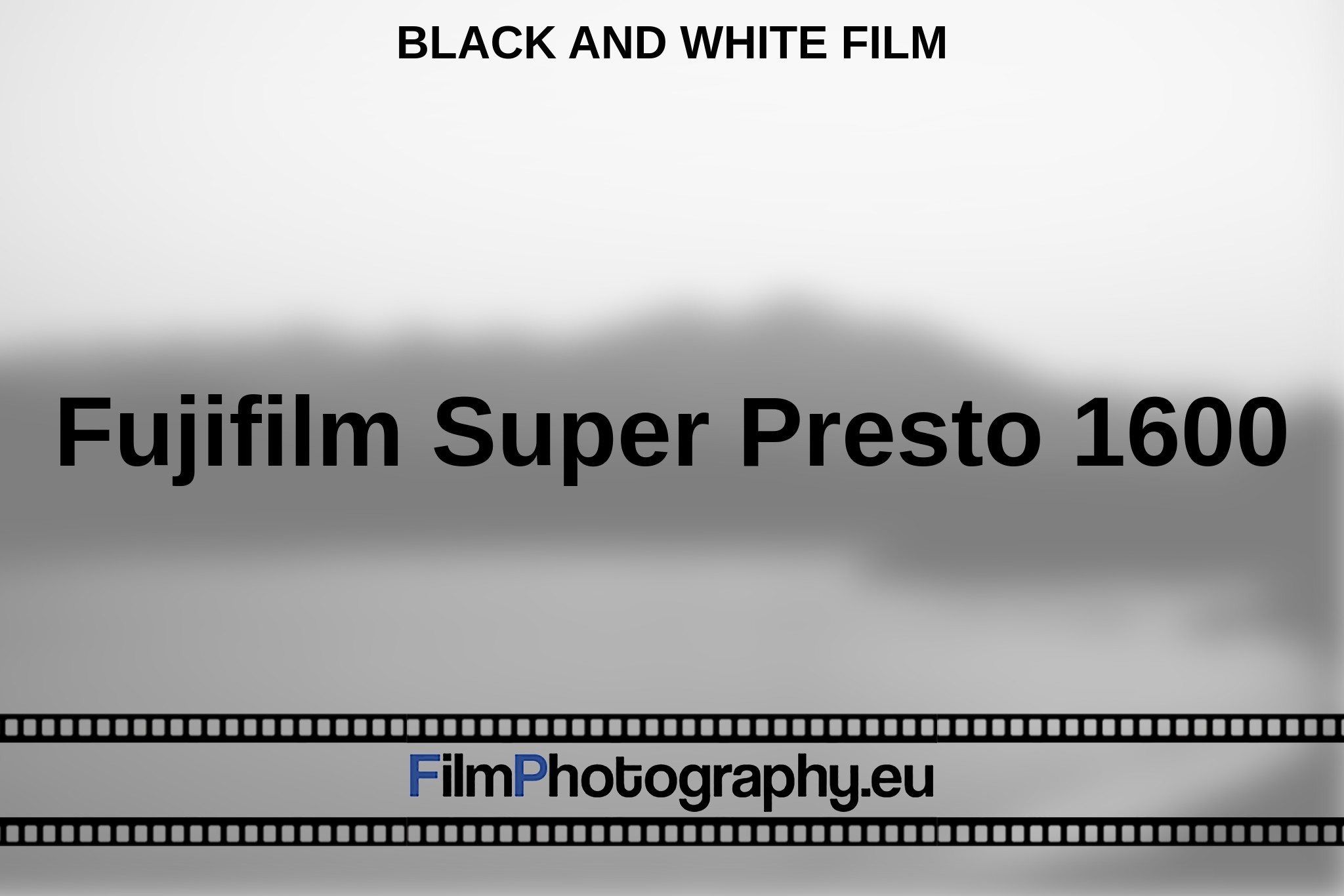The Fujifilm Super Presto 1600 is a black and white film. Fujifilm is responsible for the production of the film. It was only sold in Japan.
Since the film has a high sensitivity of ISO 1600, it is well suited for shooting in low light. The high sensitivity makes it possible to capture enough light even in dimly lit environments without the need for longer exposure times or larger apertures. This is particularly useful in situations such as concerts, indoors or at night where available light is limited.
However, it’s important to note that with high-speed film like the Super Presto 1600, grain becomes more visible. Grain refers to the visible particles or grain structure in the processed film or negative. At higher ISOs, films tend to have coarser grain, which can result in a visible texture or grainy effect. This can be a desired aesthetic effect, adding artistic character to certain recordings. On the other hand, the grain can also be perceived as annoying, especially when fine details or a smooth display are desired.
Storage
In order to keep the unexposed material for a long time, it is recommended to choose a place with a dry and cool environment. To prevent quality losses, exposed films should be developed promptly and not stored for a longer period of time.
Development of the film
So there are several options for processing Super Presto 1600 film in black and white photochemistry. Here is an overview of the various options:
Process at home: If you have the right chemistry and supplies, you can process the film yourself at home. However, this requires some knowledge and experience in film development. You can try different film developers to get the effect you want. It is advisable to test a small part of the film with different processing instructions to get the best result.
Photo lab: A simpler option is to have the film developed in a photo lab. Here you can hand in the film and the laboratory technicians will take care of the development. You can discuss with the lab which developer you want to use and if you have any special instructions. The lab technicians usually have experience with different developers and can give you recommendations.
After developing the film, you have several options:
Have prints made: Many development labs offer the option of making prints of your developed negatives in various sizes. You can give your negatives to the lab and they will print for you. This is a convenient option if you want physical copies of your images.
Have negatives digitized: To have your pictures in digital form, you can have the negatives scanned. Many photo labs offer this service. You can give your negatives to the lab and they will digitize them for you. This allows you to view the images on your computer, edit them and share them online.
Own scanner: Another option is to purchase a film scanner for private use. With a film scanner you can digitize your negatives yourself and import them into the computer. There are various film scanners on the market, so you should look for a model that suits your needs.
After digitization, you have various options:
Digital processing: Once your negatives are digitized, you can edit them in an image editing program such as Adobe Photoshop or Lightroom. You can adjust exposure, increase contrast, tweak tones, and make other adjustments to get the result you want.
Printing the results: If you want physical copies of your images, you can have them printed. You can either do this yourself if you have a good quality photo printer, or you can hire a professional printing service that will produce high quality prints in a variety of sizes.
Formats and Alternative
The Super Presto 1600 was only produced for 35mm cameras. 36 photos with a size of 24 x 36 mm fit on one copy of the black and white film. The cartridge of the film is DX encoded. There are manufacturers such as Agfa, Olympus or Kodak who offer suitable cameras for the 35mm format. But there are other cameras that are suitable for use with 35mm film.
As an alternative, you can use the Ilford Delta 3200.
Technical datasheet
| Attribute | Specification |
|---|---|
| 35mm Format | Yes |
| DX coding on cartridge | Yes |
| Development process | Black and white developer |
| Country of production | Japan |
